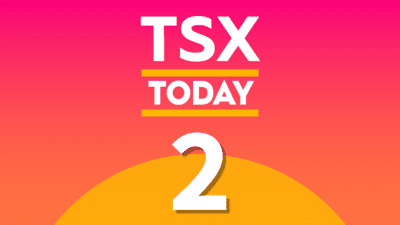By Christine Conway
Metro (TSX:MRU) recently made headlines for announcing that its pharmacy brand Brunet is set to begin operating out of the majority of the Target (NYSE:TGT) locations in Quebec. In what has been described as a partnership, this deal means Metro is gaining access to prime locations without the hassle of actually having to build them.
This has been one of a number of strategic moves Metro has taken this year — each quarter has had a restructuring surprise as management has streamlined some of the business.
What is Metro?
If you don’t live in Quebec or Ontario, you may not be familiar with the flagship grocer that bears its name. But Metro is much larger than just its flagship banner might indicate. There are more than 600 food stores and 250 pharmacies in the Metro family. Its reach extends across several brands including Food Basics, Super C, Metro Plus, and Brunet. It’s a huge operation that employs more than 65,000 staff and earned over $11 billion in annual sales.
Now let’s take a look at the changes that each quarter has brought so far this year.
Q1: The disposition of Distagro
Distagro was part of Metro’s food service operations. It supplied restaurant chains and gas station convenience stores and it had been operating at a loss. Metro made arrangements to sell it to Sysco Canada near the end of last year, but the actual transaction didn’t take place until the first quarter of this year. Distrago was sold for $22.7M.
Q2: The sale of half its holdings in Alimentation Couche-Tard
Alimentation Couche-Tard (TSX:ATD.B) is the leader in the Canadian convenience store industry. It’s also the largest independent convience store operator in the U.S. Across North America, it has 6,094 stores under various brands such as Mac’s, Couche-Tard, Circle K; through an acquisition, it has also branched out into Europe.
In 2012, Metro owned 11.1% of its shares, but furthering its shift away from convenience stores, Metro sold nearly half of its ownership position — a position going back 25 years — in Alimentation Couche-Tard in January. The sale brought in $479M.
Q3: Burnet, meet Target; Target, meet Brunet
Square footage is expensive. Metro experienced this firsthand when it renovated six stores and opened seven new ones at a cost of $182 million. The gain was 363,100 square feet. In 2012 it had even greater costs — $281.8 million to renovate 19 stores and expand by 383,200 square feet.
While the details about the arrangement with Target haven’t been released, overhead will be much lower without the maintenance cost of running the brick & mortar stores.
Q4: More re-structuring on the way
While it hasn’t happened yet, in the third-quarter report, Metro said there will be further restructuring of its Ontario stores next quarter. Fifteen stores will be affected at an estimated cost of $40 million.
Acquisitions
Metro’s story hasn’t all been about selling assets, partnering, and building new stores, though.
In October 2011 it set in motion the purchase of 55% of Adonis stores and the distributor Phoenicia. Adonis specializes in Mediterranean and Middle Eastern products but also offers a diverse range of other ethnic products. Five stores were part of the acquisition and the popular ethnic products and brands it’s known for have been put on the shelves of Metro, Metro Plus, Super C, and Food Basic stores.
In April 2013, Metro opened the first Adonis store in Mississauga, Ontario. The Adonis brand had been predominantly in Montreal, but Metro has plans to expand its presence in Ontario in the years to come.
Conclusion
The grocery wars in Canada have gotten fierce. In response, Metro has been in the process of cutting fat, raising funds, and exploring new cost-effective ways to expand.
From my view, the Brunet-Target tie-up is a mutually advantageous way to cross-promote. The Brunet brand will help new Target locations in Quebec, while at the same time existing Target customers don’t have to dawn another competitor’s doorstep to go to a pharmacy.
It’s gotten rid of unprofitable ventures in Distagro and taken some of its profits off the table from its longtime Alimentation Couche-Tard stake. Both moves provided cash on hand to pursue other opportunities; the acquisition of Adonis stores and the distributor Phoenicia should widen the customer base by bringing a great diversity of customers into their stores.
It remains to be seen whether all these moves will help it stay competitive in this increasingly fierce industry, but Metro, at least, isn’t standing still.
Canadian grocers are doing their best to deal with an increasingly competitive environment. The barriers to entry in their business have been toppled by the big U.S. chains. If you’re looking for companies that have their barriers to entry firmly intact, click here now and we’ll send you our special FREE report “3 U.S. Companies That Every Canadian Should Own”.
The Motley Fool’s purpose is to help the world invest, better. Click here now for your free subscription to Take Stock, The Motley Fool Canada’s free investing newsletter. Packed with stock ideas and investing advice, it is essential reading for anyone looking to build and grow their wealth in the years ahead.
Follow us on Twitter and Facebook for the latest in Foolish investing.
Fool contributor Christine Conway does not own shares in any of the companies mentioned at this time. The Motley Fool does not own shares in any of the companies mentioned at this time.







